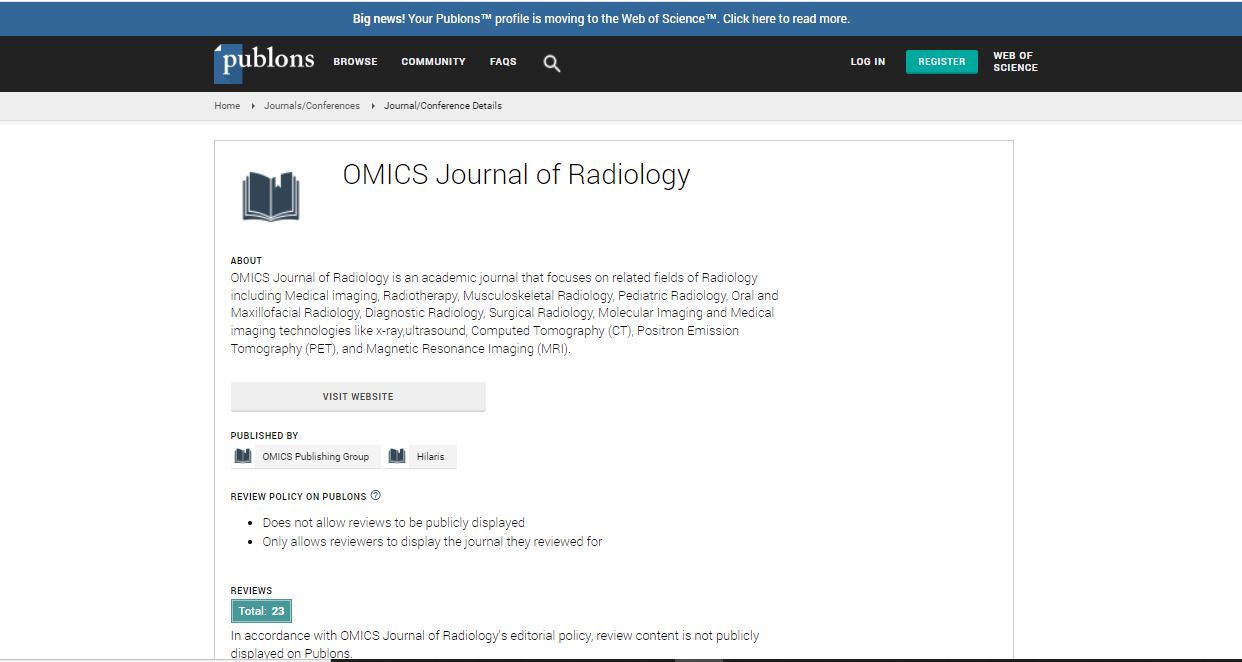Our Group organises 3000+ Global Conferenceseries Events every year across USA, Europe & Asia with support from 1000 more scientific Societies and Publishes 700+ Open Access Journals which contains over 50000 eminent personalities, reputed scientists as editorial board members.
Open Access Journals gaining more Readers and Citations
700 Journals and 15,000,000 Readers Each Journal is getting 25,000+ Readers
Google Scholar citation report
Citations : 551
Journal of Radiology received 551 citations as per Google Scholar report
Journal of Radiology peer review process verified at publons
Indexed In
- Index Copernicus
- Google Scholar
- Open J Gate
- Genamics JournalSeek
- ResearchBible
- Electronic Journals Library
- RefSeek
- Hamdard University
- EBSCO A-Z
- OCLC- WorldCat
- SWB online catalog
- Virtual Library of Biology (vifabio)
- Publons
- Geneva Foundation for Medical Education and Research
- ICMJE
Useful Links
Share This Page
Limb-sparing surgery with vascular reconstruction in lower extremity soft tissue sarcoma: Promising results
2nd World Congress on Radiology and Oncology
Khalid Abdel Aziz Mowafy, Mosaad Soliman and Ahmed Magdy
Mansoura University, Egypt
ScientificTracks Abstracts: OMICS J Radiol
Abstract
Introduction: There is uncertainty in the literature as to whether major vessel involvement in extremity soft tissue sarcomas constitutes an indication for amputation. This study includes 15 patients with lower extremity soft tissue sarcomas who underwent major vessel resection and reconstruction in the context of limb preservation for soft tissue sarcoma. Purpose: To review the impact of vascular graft replacement following "en bloc" resection of Soft Tissue Sarcoma (STS) invading major lower extremity vascular structure on short term outcomes as regard limb-salvage rate. Methods: Between December 2014 and January 2018, 15 consecutive patients with STS of the lower limb with vascular invasion were investigated, operated and followed up in Vascular Surgery Unit, Department of Clinical Oncology and Nuclear Medicine, Mansoura University Hospitals and were followed up for a period ranged from 3-36 months with mean of 13 months and a life table analysis was constructed for patency of arterial grafts and for the limb salvage rate. Results: 15 patients (12 males and 3 females) aged between 16-57 years had vascular replacement grafts (11 ePTFE, 2 saphenous vein graft) for arterial reconstruction and 3 vascular replacement grafts (2 ePTFE, 1 saphenous vein graft) for venous reconstruction. Life table analysis for arterial construction showed primary potency rate of 73.85% at 10 months and 64.6% at the end of study and limb salvage rate of 86.7% at last follow-up visit. Conclusion: Malignant vascular infiltration should not be a barrier for wide local excision for STS patients despite malignant vascular invasion of lower extremity and patients can avoid amputation after careful selection of patients.Biography
He is presently working in Department of Vascular Surgery, Mansoura University. He attended several international and national conferences and workshops
E-mail: khalid_Mowaphy@yahoo.com

 Spanish
Spanish  Chinese
Chinese  Russian
Russian  German
German  French
French  Japanese
Japanese  Portuguese
Portuguese  Hindi
Hindi 
